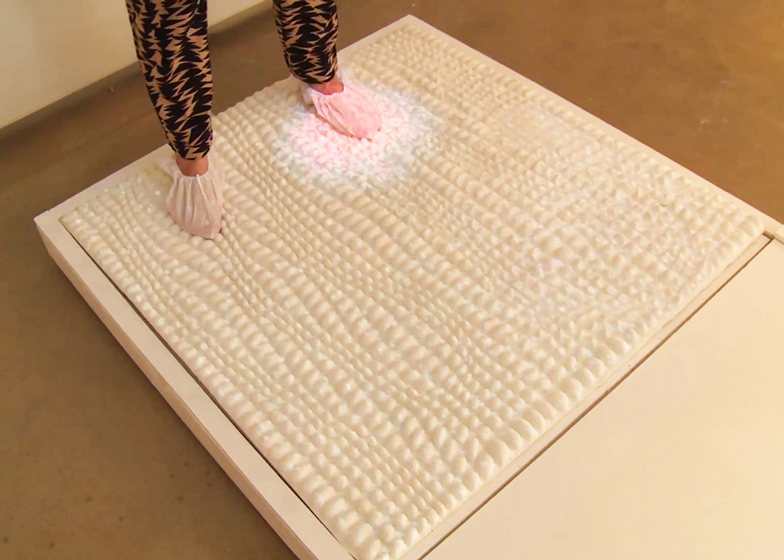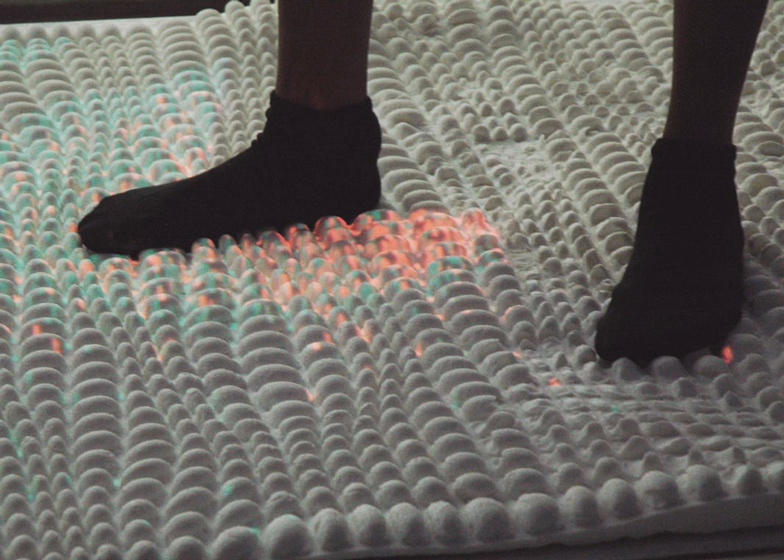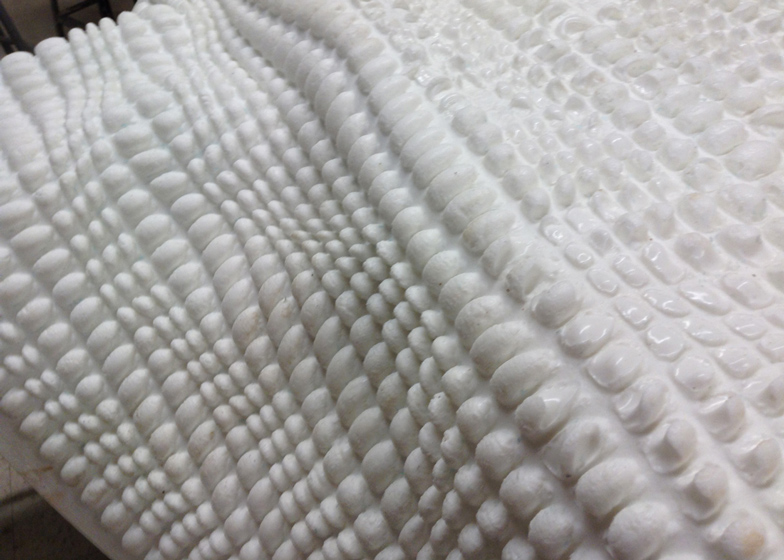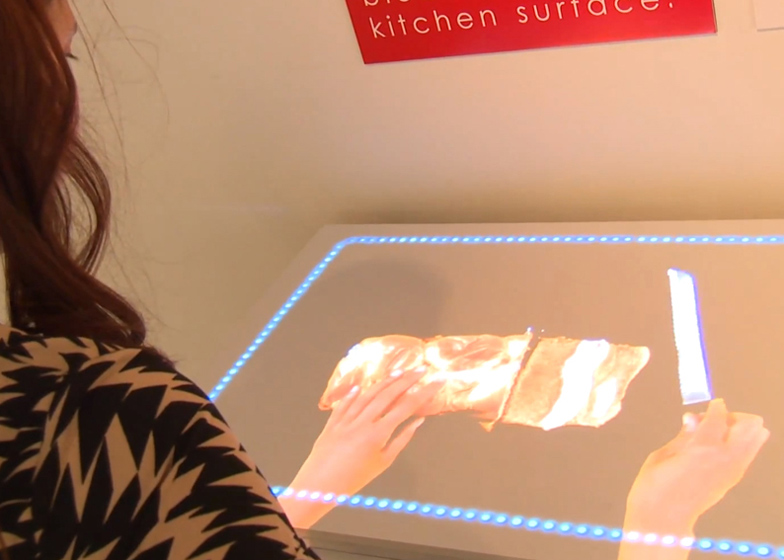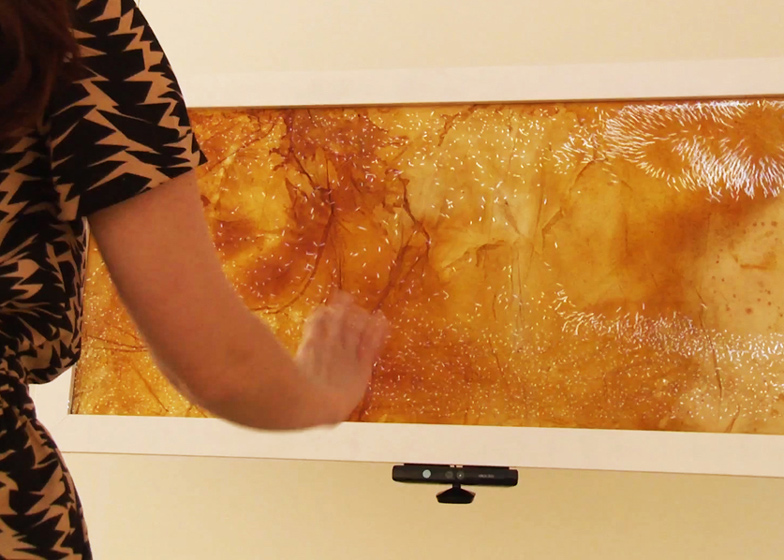Buildings in the future could feature floors embedded with synthetic bacteria that eat dirt and clean your feet, according to this project by design student Tashia Tucker (+ slideshow).
Called Synthetic Biology: The Future of Adaptive Living Environments, the project explores how synthetic biology could be used in architecture to create smart surfaces impregnated with bacteria.
"I think within the next 10 years we will start to see these biologically designed surfaces being developed in labs, and within the next 15-20 years being available to the public," Tucker told Dezeen.
Tucker simulated ways that bacteria might perform tasks such as cleaning, changing the properties of surfaces according the users' needs or alerting humans to the presence of toxic substances for the project, which she developed during a course at the Design Futures Lab at Drexel University in Philadelphia.
"The project uses digital fabrication, micro-processing, video projection, gaming technology, etc. to simulate how this 'hacked' bacteria could function as surfaces and materials of the future."
One of the proposals is a flooring material embedded with bacteria that would eat toxins from a user's feet or remove dirt and dust. "The bacteria radiates a colour and swarms to colonise the surface when you walk on it, showing a presence of these toxins," Tucker explained.
To simulate the movement of bacteria as it is drawn towards the dirt, Tucker placed a milled silicone surface on top of a pressure sensor-operated Nintendo gaming mat and connected it to an Arduino micro-processor and a projector.
Another of the surfaces could be used in kitchens to detect the presence of pesticides, pathogens, salmonella or allergens. The countertop concept is calibrated to react to the presence of potentially harmful ingredients by changing colour if anything containing that ingredient is placed on the counter.
"For example, if someone had a peanut allergy, the specialised bacterium would turn yellow and gather around anything with peanuts that touches the surface," explained Tucker. "This application could also have an impact on the health care industry. Hospitals, surgical tools and medical equipment could visually tell us when our environment is safe and clean."
A wall made from cellulose demonstrates how bacteria could be programmed to respond to human movement and form patterns on the surface that would alter the material's properties. "This application could allow users to vary the levels of privacy, air quality or even light within their environment," Tucker claimed.
To replicate the wall she grew a sheet of a cellulose substrate composed of sugar, black tea, yeast and a symbiotic colony of bacteria and yeast used to make kombucha tea. A hacked Microsoft Kinect gaming console projects an illuminated pattern that simulates how the bacteria would react to movement nearby.
There is a growing interest among designers in exploring synthetic biology, which involves the creation of artificial lifeforms to perform useful tasks.
UK designer Alexandra Daisy Ginsberg has proposed edible genetically engineered bacteria that turn your poo a different colour to tell you when you're ill, and synthetic creatures that eat pollution.
Here's a short project description:
Synthetic Biology: The Future of Adaptive Living Environments
The Design Futures Lab is a trans-disciplinary design research group housed in the Westphal College of Media Arts & Design at Drexel University. The lab is directed by a Principal Investigator, Asssistant Professor Nicole Koltick, who provides broad oversight and directs a variety of projects under a cohesive research agenda. The lab pursues speculative design research with a focus on novel processes, narratives and aesthetics.
The project, Synthetic Biology: The Future of Adaptive Living Environments by Tashia Tucker, looks a bit further into the future and speculates on the the aesthetics and interaction possibilities of a countertop, floor or wall surface that are embedded with programmed bacteria. These bacteria have various capabilities including the ability to detect pesticides, pathogens and allergens and then alert us to their presence as well as react to light and form swarm based apertures.
The collection of three dynamic surfaces offers a glimpse into the interdisciplinary field of synthetic biology and the future evolution of living materials. It examines how biologically embedded materials could look and function in the future through the use of micro-processing, depth imaging, a multi-pedal sensor map, bacterial cellulose and silicone casting.

